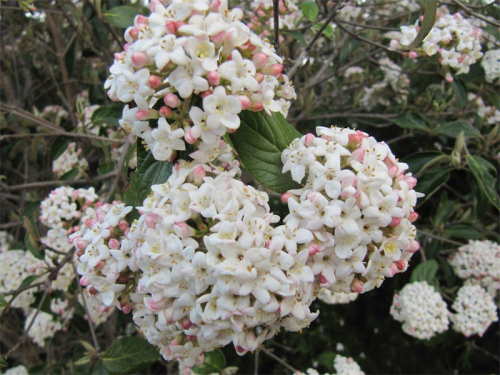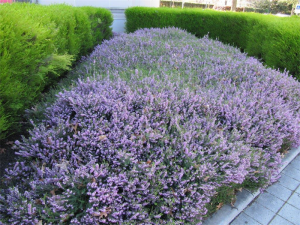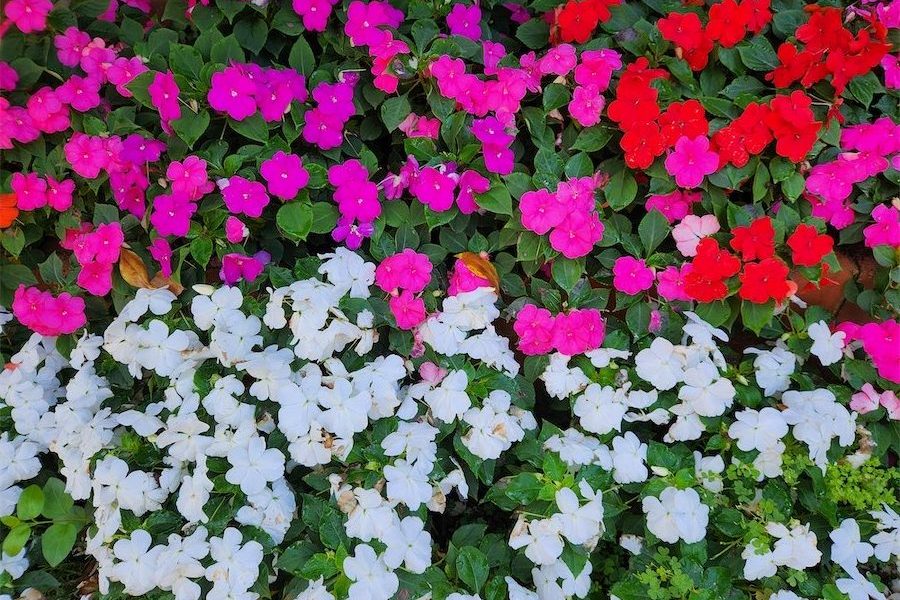
A good rule is to have at least one-third evergreens to hold the garden together. On the other hand, all evergreens can be boring.
Some of the most fragrant plants are deciduous, planted at this time of the year for flowering in spring.
A few examples will illustrate this, starting with the deciduous viburnums.
A medium-sized shrub with rounded clusters of pure white flowers that are pink on bud, the viburnum carlesii is one of the most fragrant and popular deciduous plants. Its flowers appear in spring with a daphne-like fragrance.
This shrub was introduced into western gardens from Korea in 1901. Viburnum burkwoodii is a cross between V. carlesii and Viburnum utile. This deciduous shrub is slightly larger than V. carlesii with the same fragrant white flowers.

They are acid-loving plants and ideal planted in front of azaleas and rhododendrons. Keep in mind the universal advice to plant in groups of the same colour, ideally with three, five or seven in each colour and variety, depending on the size of the garden. Ericas also make great pot specimens.

The best varieties were bred at the Kalmthout Arboretum, near Antwerp, in the ‘50s. Hamamelis are also used medicinally, especially in homeopathy. They can grow to more than three metres although, if allowed to grow too large, they can get very leggy.
It’s best to keep them to less than three metres by pruning after flowering in late winter or early spring.
The most popular variety is Hamamelis intermedia “Pallida” with a strong, sweet scent. Unfortunately, like many worthwhile shrubs in the garden, they are out of fashion and can be hard to find in garden centres.
The hydrangea quercifolia, or oak leaf hydrangea, has rich-coloured leaves that last longer than most trees and in spring and summer the large white flowers against the dark green leaves hold for a considerable time. This makes them great for floral arrangements.
IT is important to remember that frost dries the ground out and the only true way to test if the ground needs watering is to dig a hole to see how far down the moisture levels are. The best time to do this is in the afternoon.
Some flowering plants, particularly those with white flowers in winter, such as Camellia sasanqua, will turn brown with frost. Ideally, gently hose the shrubs with a light spray before the sun hits the flowers.
THE bulbs in Commonwealth Park are sprouting in what is possibly the last year of Floriade at that location. No news has appeared on a possible new location, which is a worry as it takes at least 12 months of planning to the next event.
Jottings…
- Hydrangeas can be pruned now, remove older branches and dead wood. Reduce healthy shoots to three nodes (leaf joints) from the base. It is an ideal time to take cuttings.
- Lift dahlia tubers and store them in a cool, dry place, for instnce a polythene box filled with sawdust. If named varieties, write the name on a dry tuber with a permanent marker pen.
- Material from the compost heap can be dug into the ground in readiness for spring planting. Remember compost is not mulch.
Who can be trusted?
In a world of spin and confusion, there’s never been a more important time to support independent journalism in Canberra.
If you trust our work online and want to enforce the power of independent voices, I invite you to make a small contribution.
Every dollar of support is invested back into our journalism to help keep citynews.com.au strong and free.
Thank you,
Ian Meikle, editor




Leave a Reply